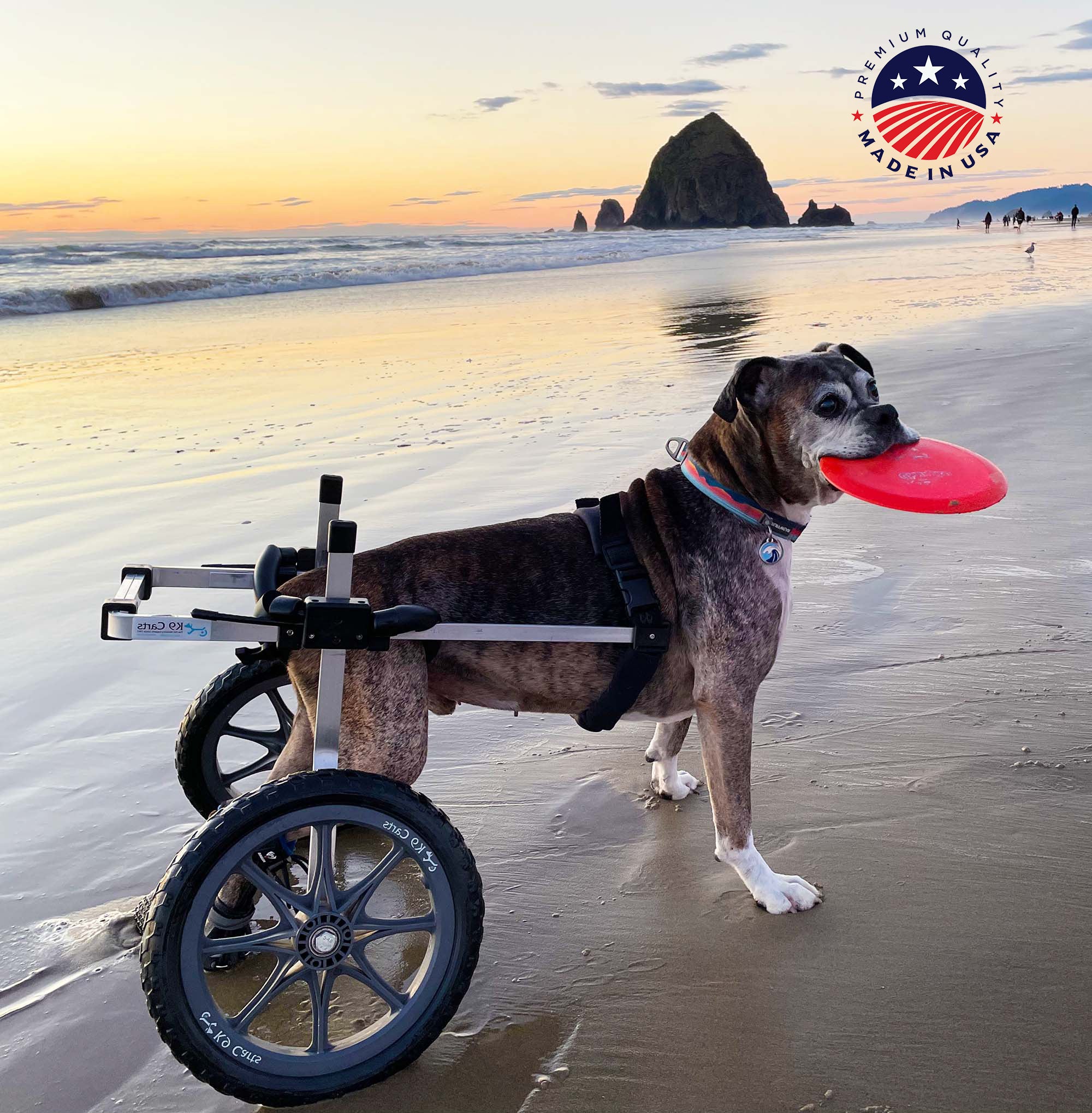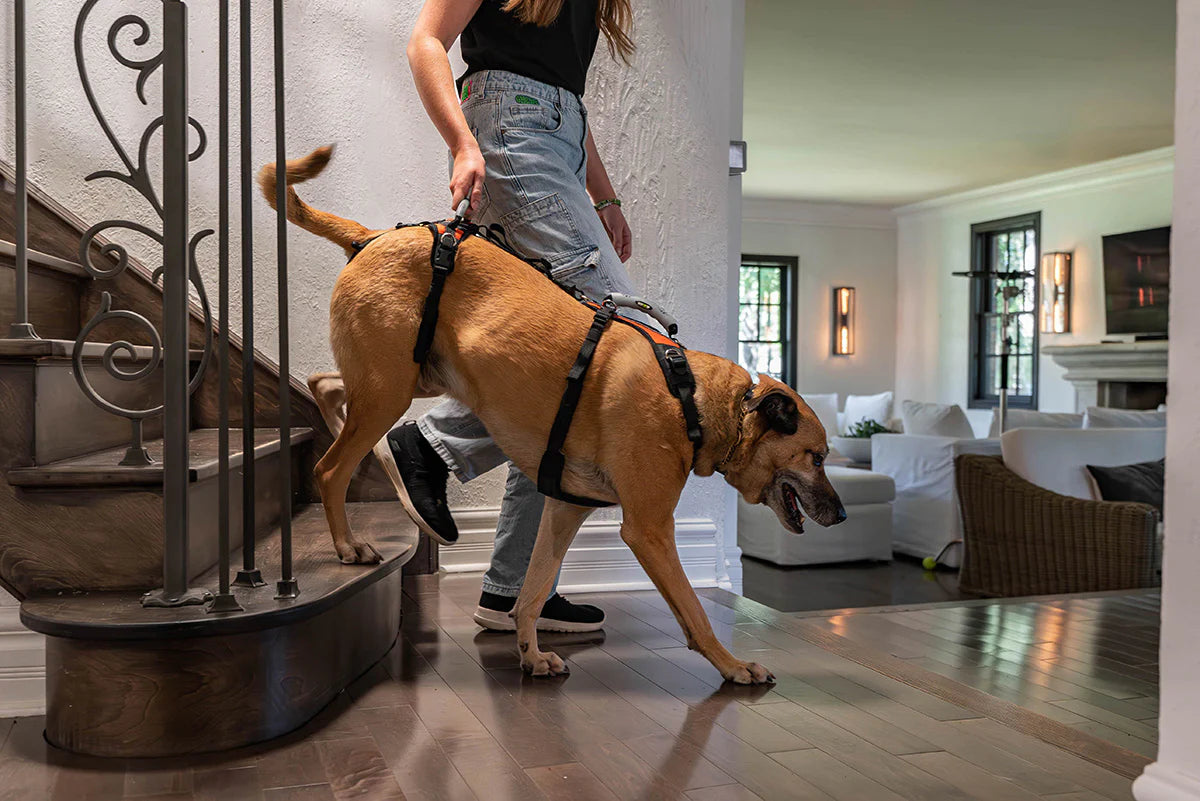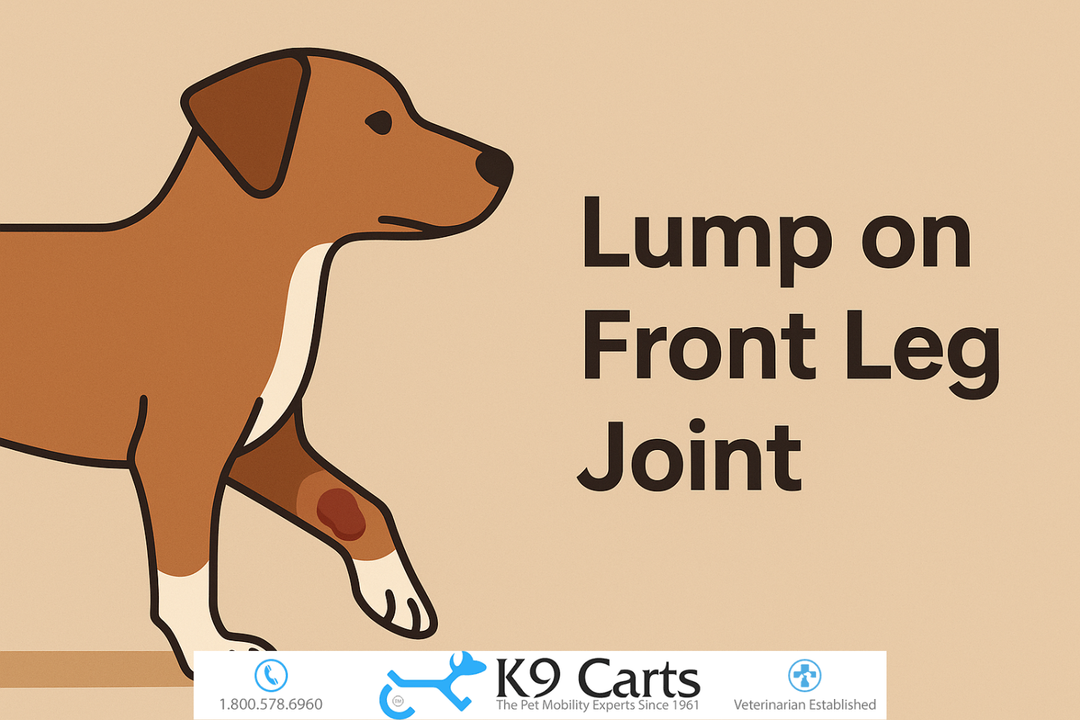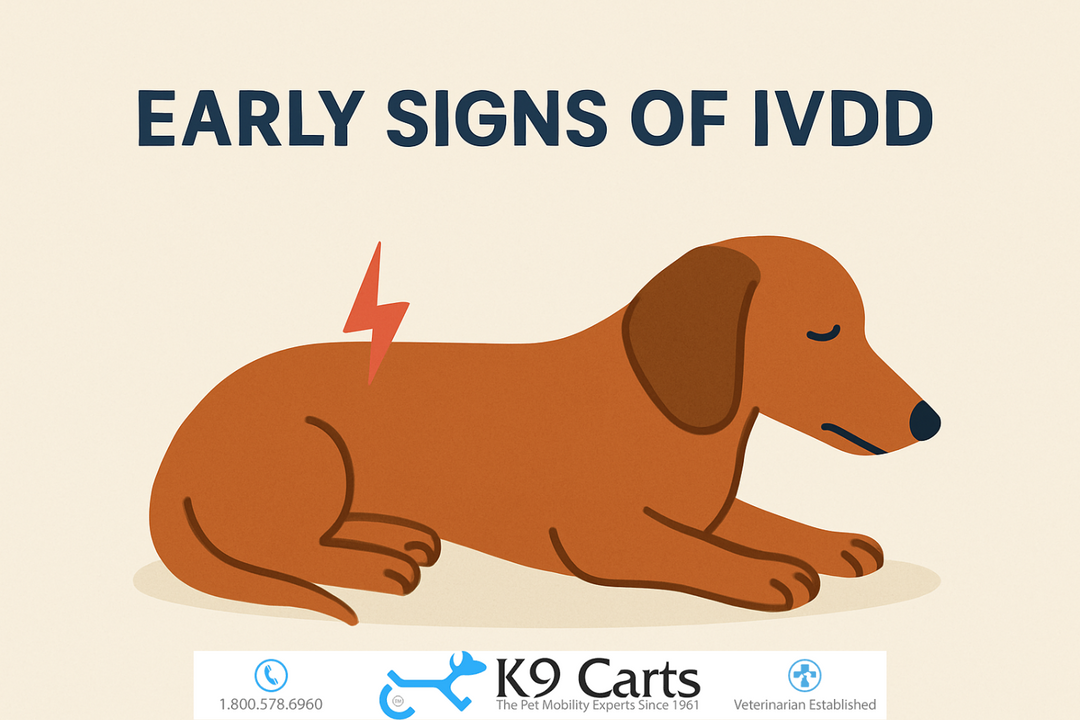Dog Not Putting Weight on Its Front Leg: Causes, Symptoms, Treatment, and Care
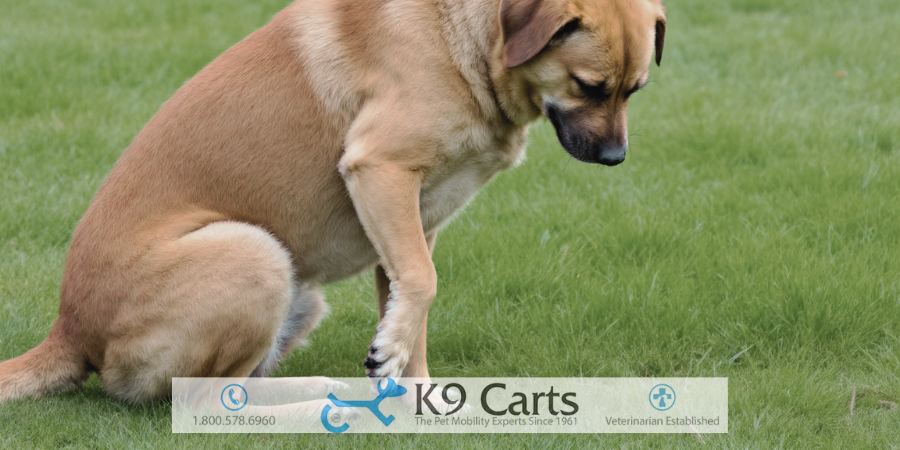
When a dog suddenly stops putting weight on its front leg, it is a cause for concern. This behavior can indicate a range of issues, from minor sprains to serious conditions like fractures or nerve damage. Understanding the possible causes, recognizing symptoms, and knowing how to respond can make a significant difference in your dog’s comfort and recovery.
This guide covers the potential reasons why a dog may not be using its front leg, how to assess the severity of the issue, treatment options, and ways to support your pet’s recovery, including mobility solutions like custom-built wheelchairs.
Common Causes of Front Leg Lameness in Dogs
1. Injuries and Trauma
Dogs are active animals that often jump, run, and play at high speeds. Trauma-related injuries like sprains and fractures can result in front leg lameness.
-
Sprains and Strains: Overexertion, slipping, or sudden movements can stretch or tear tendons and ligaments.
-
Fractures and Dislocations: A fall, collision, or direct impact can break bones or dislocate joints.
-
Wounds or Foreign Objects: Cuts, punctures, or embedded objects in the paw can make weight-bearing painful.
2. Joint and Bone Conditions
As dogs age, or in certain breeds predisposed to orthopedic issues, chronic conditions may affect the front leg.
-
Arthritis: Degenerative joint disease can cause stiffness, inflammation, and pain, particularly in older dogs.
-
Elbow Dysplasia: Common in large breeds, this hereditary condition leads to joint instability and discomfort.
-
Osteosarcoma: A type of bone cancer that causes pain and lameness.
-
Panosteitis: Also known as "growing pains," this condition affects young, large-breed dogs.
3. Neurological Disorders
Problems with the nervous system can impact a dog's ability to use its front leg properly.
-
Nerve Damage: Trauma, compression, or degenerative conditions can lead to partial or complete limb dysfunction.
-
Brachial Plexus Avulsion: A severe injury that occurs when nerves in the shoulder area are stretched or torn.
-
Intervertebral Disc Disease (IVDD): A spinal condition that can cause weakness or paralysis in one or more limbs.
4. Infections and Inflammatory Conditions
Bacterial, viral, or autoimmune conditions can contribute to lameness.
-
Lyme Disease: A tick-borne infection that can lead to joint inflammation and shifting lameness.
-
Immune-Mediated Polyarthritis (IMPA): An autoimmune disorder that causes inflammation in multiple joints.
-
Abscesses: Infected wounds can lead to localized swelling and pain.
Recognizing Symptoms and Assessing Severity
Signs to Look For
Identifying the severity of your dog’s condition involves careful observation.
-
Limping or reluctance to use the leg
-
Swelling, bruising, or visible wounds
-
Pain response when touching the limb
-
Joint stiffness or reduced range of motion
-
Sudden yelping or signs of distress
-
Licking or biting at the affected area
When to See a Veterinarian
Some cases require immediate veterinary attention, while others can be managed at home. Seek professional help if:
-
The leg appears broken, deformed, or severely swollen.
-
Your dog refuses to move or shows signs of extreme pain.
-
The lameness persists for more than 48 hours.
-
There is an open wound, bleeding, or signs of infection.
-
Your dog has a history of joint disease or neurological issues.
Treatment Options for Front Leg Lameness
At-Home Care for Mild Cases
For minor sprains or strains, you can take simple steps to aid recovery.
-
Rest and Restriction: Limit movement and prevent excessive activity for a few days.
-
Cold and Warm Therapy: Use ice packs for the first 24–48 hours to reduce swelling, followed by warm compresses to promote healing.
-
Massage and Stretching: Gentle techniques can relieve muscle tension and improve circulation.
-
Paw Inspection: Check for cuts, swelling, or lodged debris that may be causing discomfort.
Veterinary Treatments
For more severe cases, professional medical intervention is necessary.
-
Pain Medication and Anti-Inflammatories: NSAIDs or other prescribed drugs can alleviate discomfort.
-
Physical Therapy and Rehabilitation: Hydrotherapy, laser therapy, and other modalities can enhance recovery.
-
Surgery: In cases of fractures, torn ligaments, or dislocations, surgical intervention may be required.
-
Orthopedic Braces or Splints: Supportive devices can stabilize the limb and promote healing.
Supporting Mobility and Long-Term Care
Preventing Further Injury
Once a dog recovers, taking precautions can help prevent re-injury.
-
Maintain a healthy weight to reduce joint strain.
-
Provide non-slip flooring to prevent falls.
-
Use ramps instead of stairs for senior dogs.
-
Keep nails trimmed to support proper foot positioning.
When a Dog Wheelchair Can Help
For dogs experiencing long-term front leg weakness or partial paralysis, mobility aids can greatly improve quality of life. K9 Carts offers custom-built wheelchairs that provide front-leg support while allowing dogs to stay active. These devices help:
-
Dogs with nerve damage or partial limb paralysis.
-
Pets recovering from surgery who need temporary assistance.
-
Senior dogs with severe arthritis or degenerative conditions.
A front-support wheelchair enables dogs to maintain independence while reducing strain on the healthy limbs. Properly fitted mobility aids ensure comfort and safety while preventing further injuries.
Giving Your Dog the Best Support
If your dog is not putting weight on its front leg, early intervention is key. Whether the issue is minor or serious, understanding the possible causes and taking the right steps can improve outcomes. Consulting a veterinarian, implementing treatment, and considering long-term support solutions like a custom wheelchair can make all the difference. By providing proper care and mobility assistance, you can ensure your dog stays happy and active for years to come.


